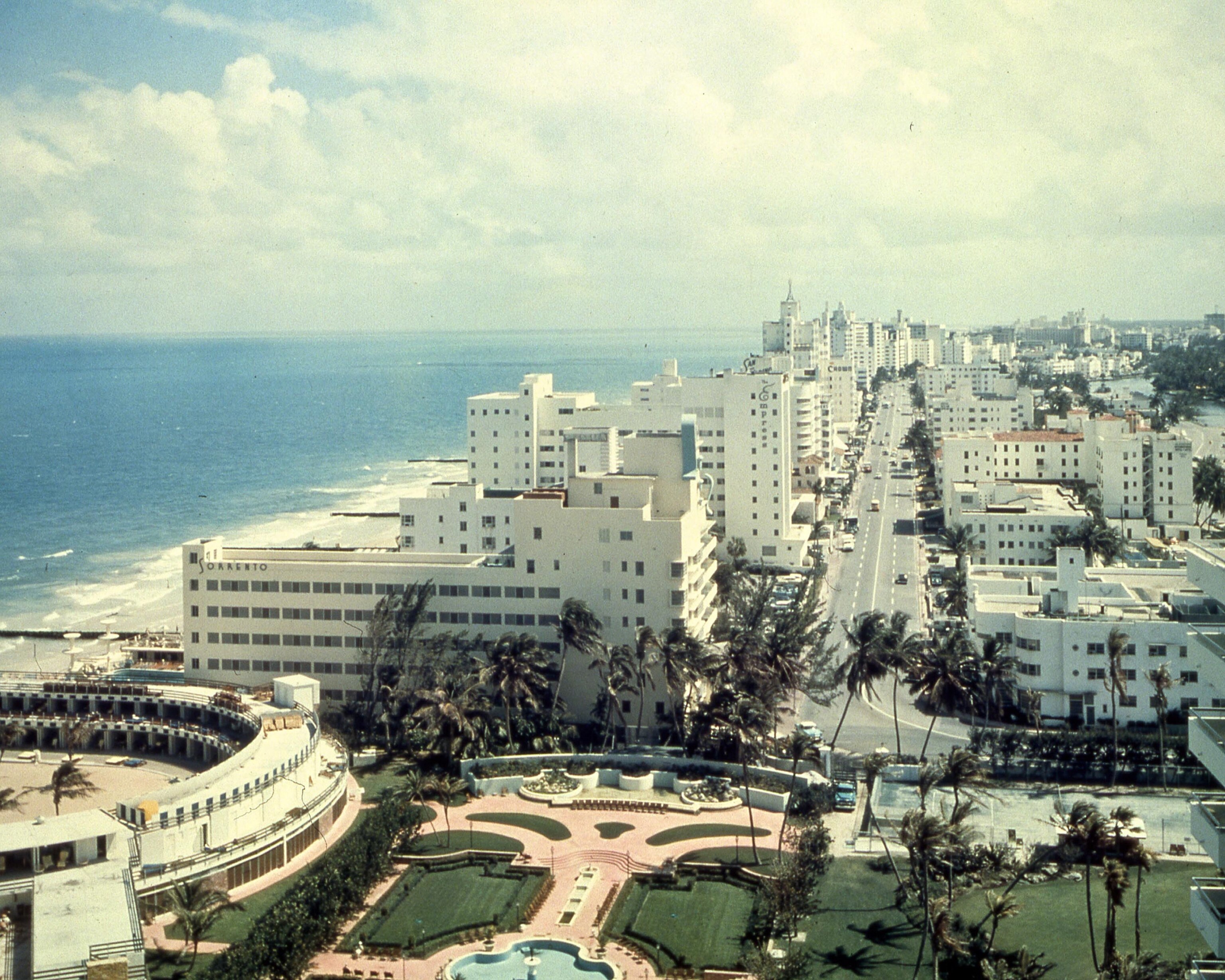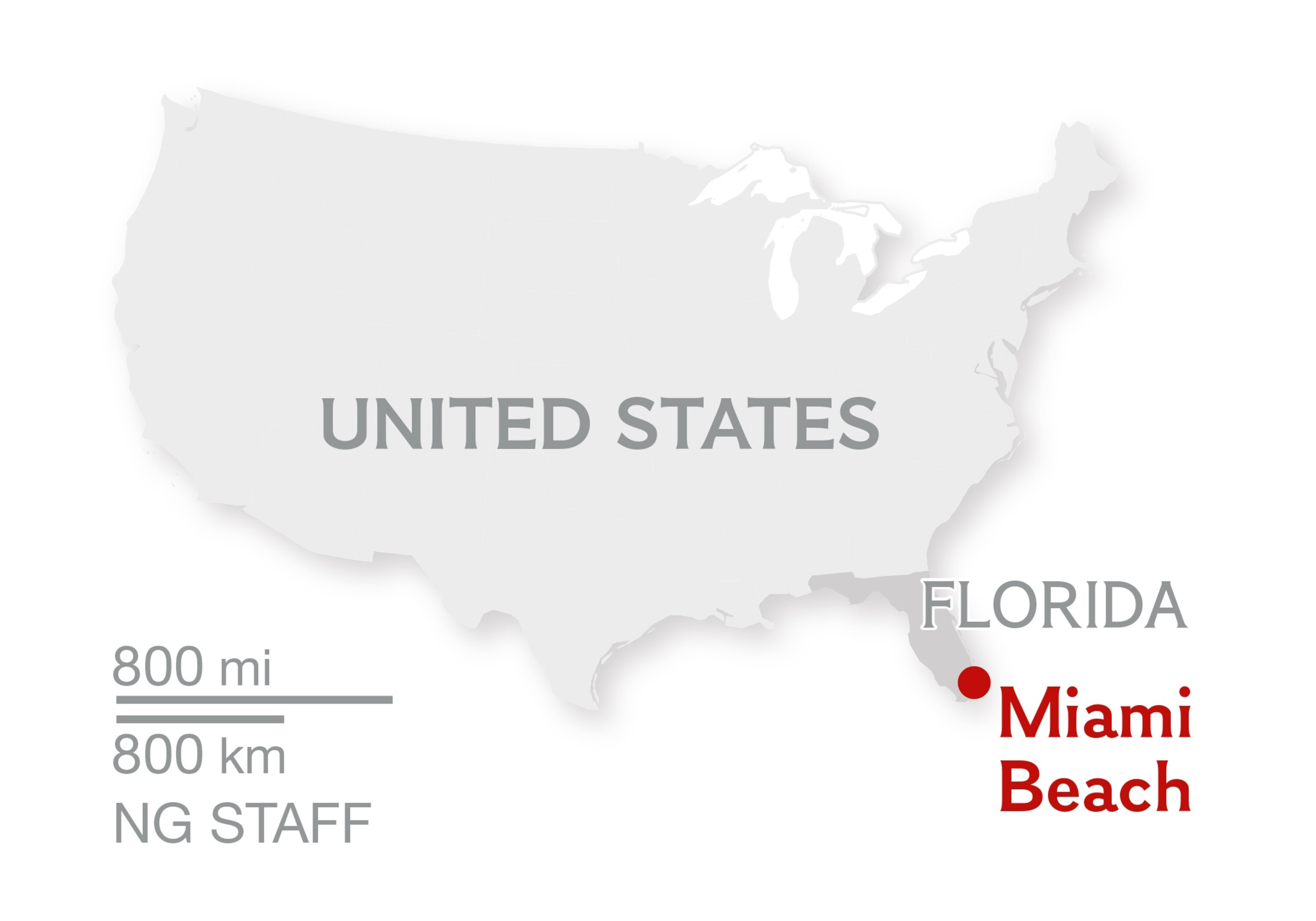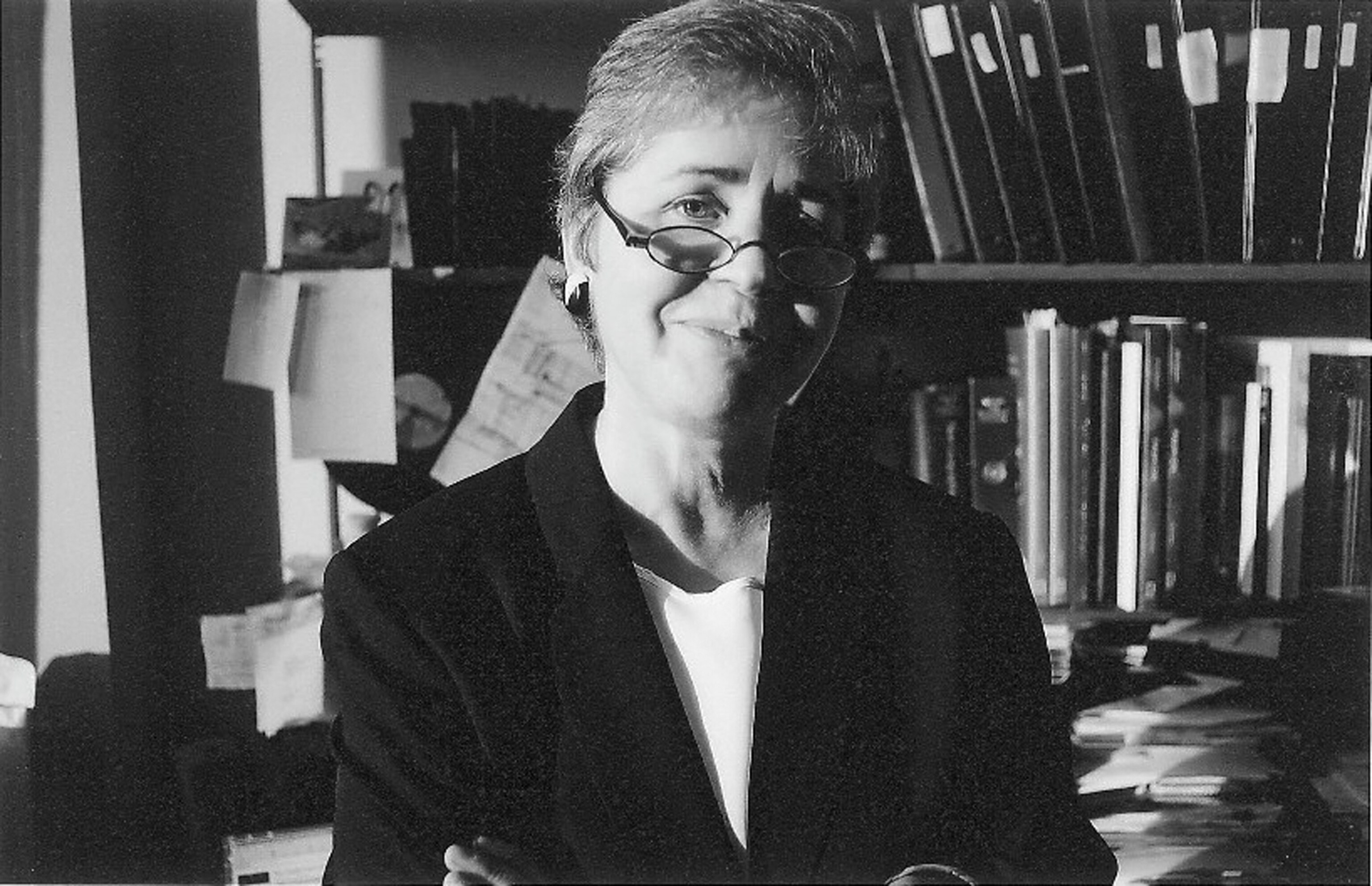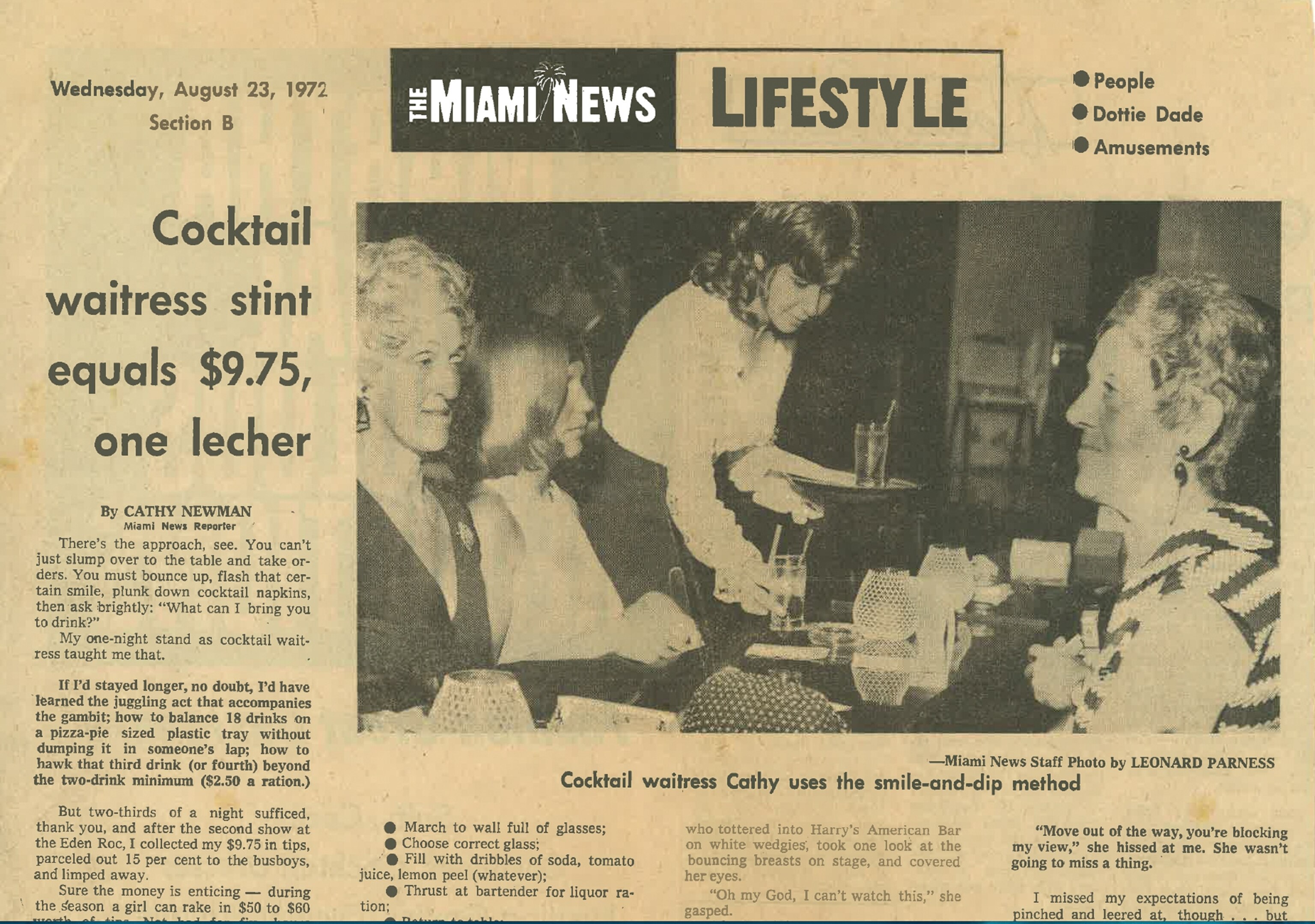
Deck the Halls With Matzo Balls. Going Home for the Holidays—to Miami Beach
Snowbirds go to Miami Beach for fun, for sun, and to live la vida loca. Gate-crashers, IMHO. I was there first. I’m a native.
In our series My Town, writers and photographers from around the world reflect on places that hold special meaning for them.
I am packing to go home for the holidays. Shorts ... check ... T-shirts ... check ... tennis racquet, swimsuit, sunglasses ... ditto.
While friends head out for less temperate destinations, like Minneapolis, Buffalo, or Detroit, I am going to Miami Beach. I'm dreaming of a bright Christmas, a green, sunny one, don't you know? You can have your jingle-belled, snow-flaked holiday. Give me sun. Give me surf. Palmy-balmy days, if you please.
This is not self-indulgence. Miami Beach is my hometown. Though I don't live there now, my family still does. I grew up there. It's home.

Of course, the Miami Beach I grew up in during the 1950s and '60s was far from the hip, trendy, gilt-edged sandbar of today. That Miami Beach, my Miami Beach, had a different vibe, one that was more along the lines of a Meyer Lansky thug in an iridescent sharkskin suit drinking rum and Coke at the Five O'Clock Club (so named because drinks were on the house if you were still upright at 5 a.m.).
Back then, what is now hipster heaven South Beach was the land of Kosher hotels and frail pensioners in one-room apartments, hence the sobriquet "God's waiting room." When Elliott Roosevelt, son of the New Deal president, ran for mayor of Miami Beach in 1965, he won handily; the aging populace living out their days there thought they were voting for his father, who'd given them Social Security. I should know. My father, a public relations consultant, handled his campaign.
That demographic began to change in the '60s and '70s as more and more refugees fled Castro's Cuba. By grace of immigration (more than 50 percent of South Florida is foreign-born, mostly Cuban but also Haitian, Colombian, Nicaraguan, and others), the area now dances to a salsa beat, Latin America on steroids and speed-more naughty, sexy, smoldering than anywhere else north of the Tropic of Cancer. It is not, my friend, your bubbe's Miami Beach.
In my day, pre-la vida loca, before Gloria Estefan, Gianni Versace (RIP), and Ricky Martin moved in, local celebrities were Jackie Gleason (the Great One broadcast his show from the Miami Beach Auditorium) or whoever happened to be playing the Boom Boom Room in the Fontainebleau Hotel (Tom Jones! Shirley Bassey!).

The Fontainebleau, at 44th and Collins Avenue, with an architectural style once described as "Miami Beach French," was designed by Morris Lapidus. Lapidus, known as the Liberace of architecture, gave his concrete creation a seductively curved exterior, a swimming pool the size of Lake Michigan, and a "staircase to nowhere." His flamboyant monstrosity or masterpiece (take your choice—one critic called it the "grossest national product") may be remembered among other things for the opening scene of Goldfinger. The hotel is where Bond first meets his nemesis, Auric Goldfinger, cheating at cards, and where his gilded girlfriend, Jill Masterson, meets her demise.
It was also, incidentally, the scene of one of the more famous headline-making events in Beach hotel history. Sometime in the mid-1970s, a well-heeled father of the bride booked the hotel for his daughter's wedding. The intended, layered in satin and lace, was all set to float down the Staircase in swirling clouds of pink dry ice to the accompanying flutter of released white doves. All well and good, except that the groom got cold feet and didn't show up.
Hotels like the Fontainebleau were for tourists—the true invasive species of South Florida—but I did go there for a bar mitzvah, the big social event in the predominantly Jewish community I grew up in.
And when I was a reporter for the Miami News (now defunct) in the 1970s, my editor thought it would be a hoot for me to do a George Plimpton-like first-person feature working as a cocktail waitress at Harry's American Bar at the Eden Roc (another example of Lapidus architectural overstatement). I lasted five hours, collected $9.75 in tips, parceled out 15 percent to the busboys, and decided to keep my day job.
The highlight of my stint, though, was serving a little old lady who tottered into the bar on white wedgies, took one look at the bouncing breasts on stage, and covered her eyes. After a while, she peeked through her splayed fingers. When I looked at the stage, I realized her eyes were riveted on three male dancers, covered by a cloth strip that made an athletic supporter look generous. I approached to take her order. "Out of the way. You're blocking my view," she hissed.

Other cultural highlights of my hometown included the strip and burlesque joints near Collins Avenue, like Place Pigalle and the Latin Quarter, run by Lou Walters, father of Barbara-the-TV-celeb, as well as the assorted dives across the causeway on Biscayne Boulevard. The Gaiety Club on 79th Street featured Zorita and her famous snake dance. Zorita once took her snake for a stroll on Flagler Street in downtown Miami and was promptly arrested for disorderly conduct. I'm not sure why. After all, the ten-foot reptile was properly leashed. "What's all the shouting about, anyhow?" she asked the policeman who arrested her. "We were only taking the morning breeze."
Of course, being underage, I couldn't go in those places. I could only try to imagine what went on there. When asked for details, my parents grew strangely silent.
As for fine arts, when I was growing up, a sculpture was a plastic flamingo planted firmly in the front lawn. No one could possibly imagine Art Basel Miami Beach, the international art show held in December, where big shot billionaires from Latin America and Eastern Europe try to outmaneuver each other to spend millions on the artiste du jour.
"Drugs" in those days meant Pepto-Bismol, Geritol, Dramamine. Gourmet meant deli at iconic monuments to corned beef like Pumperniks, Junior's, and Wolfie's. All those restaurants had a refrigerated dessert case near the entrance with rotating cake stands bearing mile-high cherry cheesecake, banana cream pie, carrot cake, chocolate layer cake, and key lime pie. As Henny Youngman might say: Waiter, take my blood sugar ... please.
Wolfie's closed in 2008; the others well before. When the Jewish Daily Forward recently polled a panel of foodies for cities with the best delis, Denver was listed but not Miami Beach. And that, folks, tells you everything you need to know about the sea change in South Florida.
Even so, it's a nice place to visit, especially in midwinter. I get off the plane at the Miami International Airport, take a deep breath of that air, thick with its mixture of sour marine notes and the heavy floral perfume of Latina women in clattering heels and jangly bracelets, look at that incredibly blue sky, and sigh. Yes, I plead guilty to nostalgia.
My father—who is 92, plays golf, and is flying to Singapore next month with his wife, my stepmother, for a vacation—still lives in the house I grew up in on Stillwater Drive. The backyard looks out on Biscayne Bay, which is where I learned to fish. I'd come home from school, throw a line out, and pull in a snapper or grouper and once a barracuda with stiletto teeth that I had to ask my father to unhook and throw back. Fishing was a soothing pastime, one I still practice to this day. When I was very young, so I'm told, my parents would tie the first fish caught to my line, and that would keep me busy for the day.
Though there is no longer a gardenia bush in the front yard and the key lime tree in the backyard died years ago, hibiscus and ixora still grow and bloom, as does a banana tree that periodically produces tiny, sweet finger-size fruit. Another new addition to the backyard landscape is iguanas, inadvertently introduced from South America; they sun themselves on the sea wall like green gargoyles. Another form of immigrant, I guess.
Recently, I read that rising seas, one of the consequences of climate change, will ultimately sink Miami Beach and all of South Florida besides. You can't go home again, the cliché says, but until that apocalyptic flood sweeps in, I can and will.
Using #mytown, show us what the holidays look like in your hometown. Submit your photos to Your Shot, where you can take part in assignments, lend your voice to stories, and connect with fellow photographers from around the globe.
Cathy Newman grew up in Miami Beach and suffered greatly when she went off to college in Chicago and encountered an odd substance known as snow. Upon graduation she returned to Miami to work as a features writer on the now defunct Miami News, where, as Dottie Dade, she also covered society functions. With the help of central heating, she lives in Washington, D.C., where she's an editor at large for National Geographic. Follow her on Twitter.
Thinking of taking a trip to Cathy Newman's hometown? Check out National Geographic's Miami Travel Guide.








